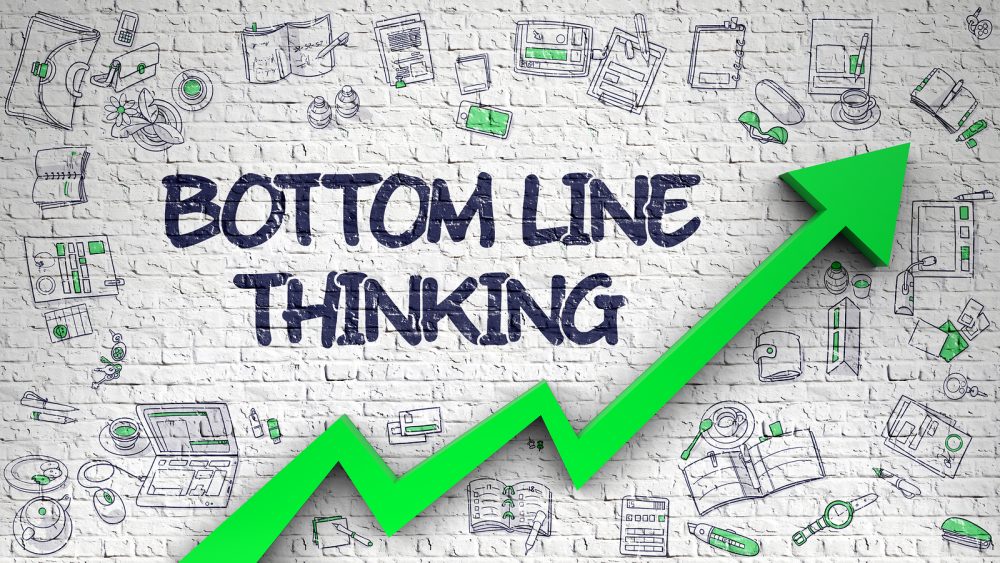Cause and Effect versus Correlation
So you think you know why you shrunk out, and you’re fixing the problem.
Not so fast, you may fix something that’s not broken.
Let me tell you a story about a very serious mistake made in many professions that have cost the economy a tremendous amount of money and resources.
It’s the case of mistaken understanding and application of two statistical measures (1) cause and effect, and (2) correlation.
In scientific studies, both are used, yet even in scientific studies, some correlations are mistakenly interpreted as cause and effect.
First a few clear examples;
In the first case, we will look at data relative to fires.
Studies are conclusive! After a review of hundreds of fires and related activity, incidents were categorized and the data was reviewed. One set of data was the size of fires, and another set of data was the number of fire trucks responding. Statistically, it was discovered that the that the biggest fires also happened to have the most fire trucks involved. Strictly speaking, that is true, and very accurate data.
So if the higher amount of trucks corresponded to the size of the fire, send fewer trucks to a fire right?
In the second case, we will look at data relative to murder rates. One category was ice cream sales, and the other was the frequency of murders. It was found that the higher the ice cream sales, the higher the murder rate.
So if ice cream sales corresponded to the murder rate, and you wanted to have fewer murders, sell less ice cream right?
These are fallacies. These are correlations or data mistakenly assumed to be cause and effect.
Of course in the first case, it is the size of the fire that causes the number of trucks to respond. And in the second case, there is a third variable that is missing from the study – the weather. The hotter the temperature, the higher the murder rate, and the higher the ice cream sales. they are positively correlated, but the ice cream as a cause does not produce more murders as a rate.
Now from a personal perspective. Names aren’t important, but this is a situation where a correlation was mistaken to be a cause-effect and decisions were made that cost millions of dollars (arguably billions).
Here’s the background
PI (perpetual inventory) systems in retail rely on some kind of human intervention. You have to correct the system if it is holding inaccurate data or you won’t be able to process automatic orders.
Shrinkage was high in this one particular period of time so a study was conducted. One set of data showed shrinkage levels. Another set of data showed unhand adjustments (these are adjustments made on the sales floor to correct any inaccuracies).
The two sets were analyzed and what was found was that there was a correlation between the two, a positive correlation; meaning when adjustments went up shrinkage also went up.
The argument made “on hand adjustment mess up the ordering system and cause shrinkage”.
The decision was made “lock it down!” and the functionality was disabled.
What did that do?
It caused out of stocks because the PI system was not speaking to the ordering system, and when somebody unloaded a counter full of product into their knapsack and walked out, the shelves remained empty. The system didn’t know the theft occurred, how could it? It was locked down.
So after months and months of not replenishing stolen product, somebody said: “wait – it was not a cause-effect, it was simply correlation and now look what we’ve done”.
So the system was turned back on.
That caused a massive replenishment order to fix the whole company out of stock problem.
…and the warehouses got plugged. Plugged so bad that the company was slot locked (they could not receive any new products because every bin in the distribution centre was used.
…so they pushed product out to stores through general orders to free up space.
…and that plugged up the stores so bad that the had to take markdowns to sell through inventory to make space.
The Bottom Line?
That year, the company announced shrinkage of over 3 billion dollars as it was considered “material”.
and guess what? The stock price took a hit of $2.70. PER SHARE!!!!
The whole mess was about 7 billion dollars when all was said and done.
Why? In my opinion – because somebody mistaken viewed a correlation as cause and effect.
Of course, PI adjustments are higher in high shrink stores, there is more missing that needs to be replenished. The shrink caused the PI adjustments NOT the other way around.
So please be careful when you are faced with data. Don’t automatically assume one incident leads to another when you are looking at a simple correlation. The biggest companies in the world make this error. The most trusted scientists in the world make this error. It is human nature to want to be able to say we solved it, but just have a second look before you apply the fix.
- Wait – my photocopier has a hard drive??? - May 28, 2024
- Communication – the Key to Profit - May 28, 2024
- What’s the Deal with Security Gates? - February 14, 2024
- We live in a Smart World - June 11, 2021
- Security Gates - April 29, 2020
- Five Considerations before embracing a theft/arrest program - March 12, 2019
- Little Black Book of Scams - December 10, 2018
- Shoptheft Protocol - December 10, 2018
- When all Hell Breaks Loose - November 23, 2018
- What do I need to do to Protect my Business? - November 9, 2018




